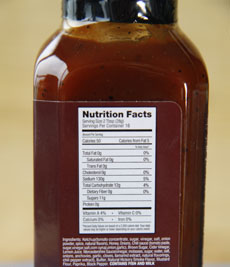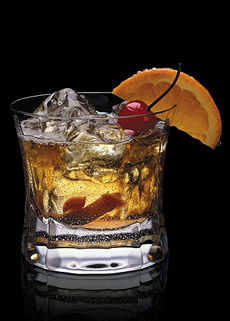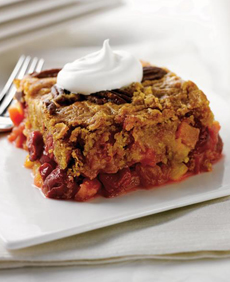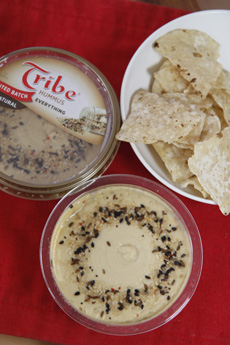|
According to a 2012 study by the U.S. Centers for Disease Control and Prevention, people who read the nutritional information on food labels are generally thinner than those who don’t read labels.
Not only do they understand what a portion size is; some foods appear to be much healthier than they really are, with much more salt and sugar than you’d like. Dr. Wendy Bazilian, nutritionist and author of The SuperFoodsRx Diet: Lose Weight with the Power of SuperNutrients, shared some tips on understanding nutrition labels.
1. Look for real ingredients—words you recognize. Avoid artificial dyes, preservatives, high fructose corn syrup, hydrogenated oils (trans fats) and MSG.
2. If you have food allergies, look at the bottom of the ingredient list. The eight most common allergens—milk, eggs, peanuts, tree nuts, fish, shellfish, soy and/or wheat—are required to be highlighted in a separate line, such as, “Contains milk and soy.”
|
|

Read those labels for portion size as well as salt, sugar and fat grams. |
3. Check the serving size AND the servings per container. The serving size is an amount of the food that represents one single serving. The rest of the nutrition facts then provide information based on that amount. If the serving size says 1/2 cup, then the calories, fat, cholesterol, sodium, protein, carbohydrates, fiber and other nutrients shown are for 1/2 cup of that food.
The servings per container line indicates how many servings there are in the entire package. Many portion sizes are much smaller than are logical; you may note that the serving size is half a cookie or energy bar; for beverages, it can be half of a 16-ounce bottle or a 12-oounce can.
So if the serving size is half a cookie and you eat two cookies, you’ll be eating four times the calories, fat, protein, carbs and other nutrients. Do the math before diving in. As to what to do with the other half of a can of soda, especially when you’re on the go and can’t pour half in a glass for someone else…the choices seem to be to consume the extra calories or toss the other half.
|

This barbecue sauce has 11g sugar in two
level tablespoons. If you slather it on, you
might as well eat the sugar bowl! Photo by
Elvira Kalviste | THE NIBBLE. |
|
4. Take a close look at energy bars. “Energy” doesn’t mean “healthy.” Look for real, not artificial, ingredients on the list; aim for 2 grams (or more) fiber and look for sugar of 10 grams or less. And check that portion size: Is the bar one serving or two?
5. Choose better-for-you frozen meals. Many prepared meals are packed with fat, sodium and sugar. Look for real ingredients: whole grains, whole foods,* lean proteins, vegetables and fruits. Keep the calories under to 400-600 per servings and aim for 450 mg or less sodium per serving, 600 mg as an absolute maximum. Dr. Bazilian, by the way, is a consultant to CedarLane Frozen Foods, an all-natural line that is modest in calories and low in sodium.
Dr. Bazilian advises to add something fresh and whole on the side when you enjoy a frozen meal—some baby carrots or cherry tomatoes as a starter, a green salad, an apple or grapes for dessert.
|
*Whole foods are unprocessed and unrefined food products, or those that are processed and refined as little as possible. They typically do not contain added ingredients such as sugar, salt, fat, food dyes, artificial ingredients, fillers, etc. Examples include whole grains, fruit, vegetables, nuts, seeds, unprocessed meats, fish, unprocessed dairy and eggs.
|
|







